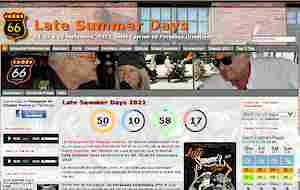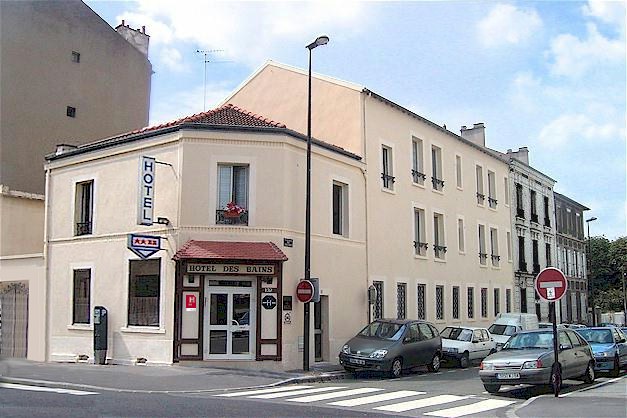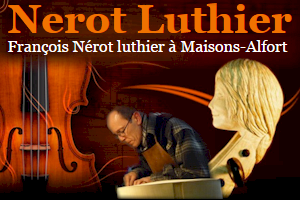Étiquette : CNRS
The soil underfoot we take for granted
What contains 25% of the Earth’s known biodiversity and 75% of its terrestrial biomass, provides its natural fertility, and regulates its watercourses as well as the climate? No need to look very far, it’s right under your feet: the soil! The biologist…
Memorising the passing of time
A team from the CNRS, working in partnership with scientists from The Netherlands, has managed to identify neurons that can encode the passing of time. An important advance in our understanding of so-called episodic memory.
The new frontiers of the living world
With the discovery of DNA and the spectacular progress of imaging in the twentieth century, it was assumed that biology had already accomplished its revolution. Quite the opposite, says Catherine Jessus, former director of the CNRS’s Institute of Biolo…
The blob creeps into the homes of the French
As a week of experiments begins in 5,000 schools in connection with this strange unicellular organism, the biologist Audrey Dussutour is looking for 10,000 volunteers for her next participatory science experiment. The goal is to understand how global w…
The James Webb Space Telescope is set to explore the early Universe
After a series of delays, the James Webb Space Telescope is at last scheduled for launch on 18 December. Its instruments have been designed to observe the most distant objects in the Universe.
How are oceans born?
The oceans have not always looked the same as they do today. Their shape and size keep changing over the course of geological time. There are even places on Earth where they are still in the making. This raises the question of where and how oceans form…
Fascinating scientific shots
Discover the laureates of the new edition of the LPPI “Proof in Images” competition, organised by the CNRS and the ACFAS, its Canadian partner in Quebec. View these twenty fascinating submissions originating from ambitious research and vote online to s…
Personalised breast reconstruction
For women who have undergone a mastectomy after breast cancer, the start-up firm Healshape has developed a 3D bioprinted breast implant that can be adapted to all body shapes. The aim is to reconstruct the entire breast using cells from the patient.
Ruins tell the tale of human societies
The archaeologist Alain Schnapp is a specialist in ancient Greece and a keen defender of the world’s archaeological heritage. Author of the book, « A Universal History of Ruins, » he shares his thoughts on how human societies relate to their own past.
Boosting space propulsion
Higher-performance, lighter, cleaner… Scientists are using every possible means to improve the systems that allow rockets, shuttles, and satellites to take off from Earth and move about in space.
Mars: Jezero crater really was a lake
The first published data from the Perseverance rover shows that there was a large, deep lake on Mars 3.6 billion years ago, and that it was swept away by a climate upheaval.
Sports science in all fields
The presence of scientists within elite training squads has become increasingly commonplace. Among other things, they study pedal strokes in cycling, muscle exertion in running, and decision-making processes in basketball. Discover some of the images h…
Numbers that shape the world
The study of numbers has driven mathematics since antiquity. The constantly evolving field of arithmetic connects numbers and geometry, and is used in everyday applications, particularly in cryptography.
The mechanics of sea ice
Major climate models are based on a series of more specific overlapping models that are in constant interaction with one another. However, those describing the behaviour of sea ice have proved to be obsolete. As a result, researchers are now developing…
Dissecting the “spice” of Dune
One of the central elements in the new sci-fi film Dune by Denis Villeneuve is a substance with extraordinary properties. Called “spice”, it bears a resemblance to certain molecules already in use in our own world! The CNRS chemist Fabrice Chemla expla…
Understanding urban heat islands
The effects of urban heat islands, which can increase temperatures in cities by as much as 10 °C, are particularly noticeable in summer. For some twenty years Valéry Masson has been studying these localised phenomena, which often go undetected by conve…
“Mein Kampf remains invaluable for understanding Nazism”
Published last June, the study entitled Historiciser le Mal, une Édition Critique de Mein Kampf (“Historicising Evil, a Critical Edition of Mein Kampf”) is the fruit of five years of work by twelve specialists in Nazism. Historian Florent Brayard, co-d…
Invasive species: an ecological and economic disaster
Biological invasions are the second most common cause of species extinction on Earth, and also take a heavy toll on our health and the economy. On the occasion of the World Congress of the International Union for the Conservation of Nature (IUCN), to b…
Van Eyck was a precursor of augmented reality
Using digital technology, a researcher has unravelled the secrets of the use of perspective by the Flemish painter Jan Van Eyck, a technique previously believed to be specific to the Italian Renaissance artists.
Landscapes of the microworld
Progress in microscopy continues to expand our window onto the world of the infinitesimally small. Whether in chemistry, biology, engineering or digital simulation, these images paint a phantasmagoric and yet factual portrait of the world that we live …
Keeping an eye on the forest
For the past 20 years, a scientific team has been monitoring the state of health of Barbeau Forest in the Seine-et-Marne region east of Paris. Researchers and engineers analyse the flux of carbon dioxide and water vapour between the forest and the atmo…
Keeping an eye on the forest
For the past 20 years, a scientific team has been monitoring the state of health of Barbeau Forest in the Seine-et-Marne region east of Paris. Researchers and engineers analyse the flux of carbon dioxide and water vapour between the forest and the atmo…
Researchers step up the fight against Covid-19
Numerous studies are being carried out in laboratories to develop medications that can treat SARS-CoV-2. New therapeutic strategies targeting the virus or the cell proteins it hijacks to its benefit are being tested and could offer treatments that are …
Edgar Morin turns 100, and continues his journey
On Thursday 8 July, France’s best-known intellectual celebrated his hundredth birthday – and eight decades of an exceptional scientific career, driven by a keen ambition to build bridges between disciplines and explore all points of view, as testified …
A century on, does BCG have a future?
Tuberculosis kills 1.5 million people throughout the world each year. A century after it was invented, BCG remains the only vaccine against this infection, which is still poorly understood. Highly effective in children, its limitations have nevertheles…
Scientists are honing their weapons to fight Covid-19
Numerous studies are being carried out in laboratories to develop medications that can treat SARS-CoV-2. New therapeutic strategies targeting the virus or the cell proteins it hijacks to its benefit are being tested and could offer treatments that are …
Biodiversity loss and climate change must be addressed together
A recent report, co-authored by experts on climate change (IPCC) and biodiversity loss (IPBES) shows that these two phenomena are closely related. And although some solutions put forward to tackle either of the two may prove detrimental to the other, t…
Profiling sharks to eliminate killers
Dividing his time between France and Polynesia, the ichthyologist Éric Clua devotes his efforts to studying sharks, both to preserve their populations and to help prevent attacks on humans.
InSight probes the Martian interior
Since 2018, the InSight mission has been exploring the internal structure of the Red Planet. Geophysicist Philippe Lognonné tells CNRS News what they’ve discovered so far.
Investigating one of the cradles of humankind
The fossiliferous site of Bolt’s Farm, in South Africa, spans millions of years of history, including episodes of climate change that impacted early hominids and their environment. To study it, researchers from the country’s National Research Foundatio…
Research on HIV has reached a turning point
Forty years after its discovery, HIV-AIDS has become a chronic disease thanks to triple therapies. Yet there is still no known cure for it and a vaccine is nowhere in sight. Monsef Benkirane, a virologist at the Institute of Human Genetics (IGH), gives…
Black holes and neutron stars meet up with a bang
The LIGO and Virgo observatories have announced the very first sightings of the merger of a black hole and a neutron star. These discoveries should help gain a better understanding of how these compact bodies form and evolve.
The forest of Fontainebleau is home to rock art treasures
With more than 2 000 engraved shelters, the forest of Fontainebleau is home to one of Europe’s largest rock art complexes. A research mission in the Paris region is focusing on geometric engravings, believed to date back to the Mesolithic (11 500 BP to…
The story of AIDS, from fear to fight
The first identified cases of AIDS, in 1981, caused an outbreak of panic, along with widespread discrimination. Since medical science initially proved powerless, people with AIDS and support groups campaigned vigorously for access to treatment and demo…
Jean Dalibard receives the CNRS 2021 Gold Medal
A brilliant physicist and a leading specialist in cold atoms, an area that is central to light-matter interaction, Jean Dalibard has been awarded the CNRS 2021 Gold Medal, one of France’s highest scientific distinctions.
Leading CNRS project on hybrid AI launched in Singapore
A vast collaborative project on hybrid artificial intelligence, led by the CNRS’s subsidiary in Singapore and allocated a budget of €35 million over five years, will begin in late 2021.






